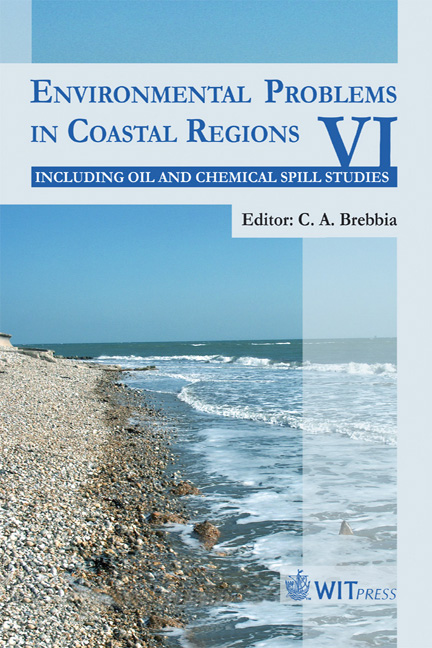Sensitivity, Exposure, And Vulnerability Of Gravel Beaches To Petroleum Pollution, Avalon Peninsula, Newfoundland, Canada
Price
Free (open access)
Transaction
Volume
88
Pages
12
Published
2006
Size
725 kb
Paper DOI
10.2495/CENV060221
Copyright
WIT Press
Author(s)
N. Catto & B. Etheridge
Abstract
The Avalon Peninsula lies directly adjacent to a major trans-Atlantic shipping route, and to offshore petroleum development and areas of ongoing exploration. The cultural and socio-economic significance of the established fisheries, increased tourism, and endemic petroleum pollution exemplified by the arrival of oiled seabirds on the Avalon beaches, indicate that the potential impact of petroleum contamination is significant. Study of gravel beaches showed differences in morphology, sedimentology, energy regime, and sediment transport. These characteristics change the fate and effect of petroleum contamination on each beach. Beaches have been ranked on their sensitivity to oil pollution based on their physical characteristics. The beaches are gravel dominated, reflective systems, with sediment transport varying from shore normal on some beaches to both shore normal and shore parallel transport on others. The movement of sediment, litter, and seaweed in the nearshore and beach environments provides analogies for how oil will behave. Lower energy beaches will not self-clean as well as the high energy, steeper sloping, highly reflective beaches, and are thus more sensitive to pollution. Petroleum contamination potentially can come from both offshore and terrestrial sources. For a particular beach, the risk of contamination depends upon the population demographics, socio-economic circumstances, type and intensity of economic activity, location with respect to shipping lanes and petroleum development, transport regime, and beach dynamics. The degree of exposure to potential petroleum contamination from both offshore and terrestrial sources has been categorized, and forms a basis for assessment of the risk of contamination on each beach. Consideration of the risk of contamination from all sources, in combination with sensitivity analysis, allows a vulnerability assessment. The vulnerability assessment can be used as a basis for planning and allocation of resources, to cope with both endemic oil pollution and to promote an effective response to a potential major event. Keywords: beaches, petroleum pollution, Avalon Peninsula, Newfoundland, vulnerability, sensitivity.
Keywords
beaches, petroleum pollution, Avalon Peninsula, Newfoundland,vulnerability, sensitivity.





